Feel like doing a little time travel? Let’s go back in time to visit my old PreK classroom on Hampton Avenue in St.Louis, MO. Sixteen years ago, you would have found sticker charts ( aka behavior chart) for each one of my students on the inside of my classroom door. Some of the sticker charts filled with little smiley face stickers, some close to empty. All were there for little eyes to see and compare. That was the point right? The point of a preschool behavior chart is to let them see their success and failures. Only it’s not just for that one student; it’s there for everyone to see. A behavior or sticker chart is not about helping children learn to make better choices, it’s about shaming them into it.
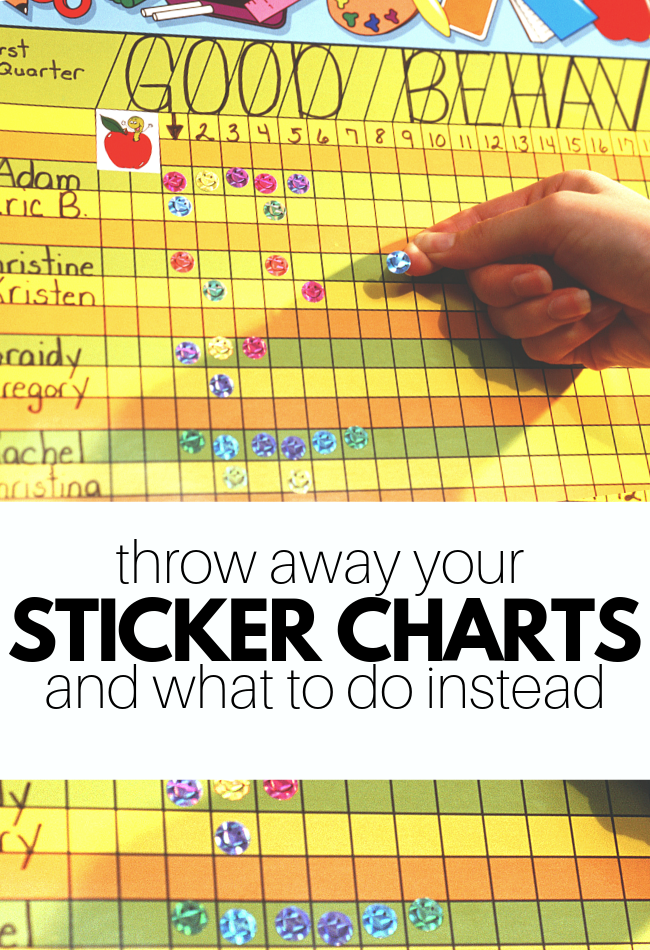
It breaks my heart that I ever thought this was the way to encourage children to behave. I remember this class well, and it was a tough class, no small part because I was a new teacher. I’d worked with preschoolers before but never all day, every day. I had multiple children who were struggling with significant challenges, and I was trying my best to find a way to make this chaotic classroom peaceful. A very misguided way was using sticker charts displayed publically for all to see.
What’s The Big Deal About Sticker Charts? My students love our sticker chart.
Sticker charts shame children.
Think for a minute about those empty sticker charts. When I close my eyes and remember that door, I see three charts in particular that were always empty. These children struggled, they had heavy loads on their shoulders when they walked into my class every single day; unstable families, behavioral challenges caused by mental illness and trauma, lack of sleep and lack of proper nutrition. Maybe these aren’t the exact issues your students come into class with, but we all know that many behaviors we see in class stem from outside issues. That doesn’t mean we ignore them, but we need to put them in context.
Sticker charts and the way they are often used, ask all children to reach the same behavioral expectations without stopping to ask if the start line is the same for each child. Of course, the answer is no, the start line is all over the place and changes from day to day. Having a rigid system like sticker charts simply don’t make sense when you are working with incredible and varied humans.
When a child looks up and sees that they didn’t get the sticker for “behaving” during the prescribed time there is no room on that chart for an asterisk that says ” But Billy had no breakfast, his stressed-out dad yelled at him the whole way to school, and is worried about his dad yelling on the way home.”
When a child feels shame that doesn’t encourage them to behave better, instead it makes a child feel poorly about themselves and more likely makes challenging behavior worse. On top of that, what are we as preschool teachers, some of the very first teachers these children will ever have, doing to set school up to be a safe, accepting place where they can take risks, be accepted for who they are, and feel free to learn? Shame has no place in the classroom.

What If I Give Stickers Based On Differentiated Expectations?
This is actually what I tried, spoiler alert it failed. I had different expectations for my students, but I didn’t have time in class to explain to each child who saw that I gave Billy a sticker despite the fact he’d headbutted me that morning that yes, headbutting is wrong, he’s getting a sticker for calming down so much faster than last time this happened. This would be much easier to simply talk to your students, to praise individuals specifically, and encourage them individually. When you try to use rigid systems in a flexible way they fail. Instead, find a new system.
But I Use Sticker Charts to Communicate With Parents
Sticker charts are not useful communication tools anyway. A behavior chart can’t explain the situation or the intricacies of why or how that child earned or failed to earn a sticker. What do parents learn from a sticker chart, anyway? Nothing other than a general “You were good.” or “You were bad.” is that the kind of communication we want? Take the time to talk to parents at pick up saying specific things like “Hailey was an incredible friend on the playground today.” and make sure the child hears you praising them. What a powerful thing to hear an adult in authority praising you. You can write a sticky note and pop it in their bag, send a quick text, and of course, email.
On the other hand, discussing challenging behavior with parents is a lot more nuanced. I have a whole post about ways to do that. Suffice it to say that a sticker chart is not the way to do it.

OK, What Do We Use Instead of Sticker Charts?
Use relationships.
Get down on the floor and build relationships through play. Read books together. Talk over at the playdough table. Play tag on the playground, and get to know these amazing little humans that you get to spend time with.
It’s not a quick fix, but good fixes never are.
Building relationships with your students takes time but you will build the connections you need for authentic behavior management. When a child wants to please you, more often than not, they will. If you build relationships with your students you will have a better understanding of why a child is acting out. You will also have a better handle on how to prevent the bad behavior, and how to sensitively address the cause, not just the disruptive behavior they are expressing.
When we have a deep connection with our students we don’t need to give them a sticker to praise students or to encourage good behavior.
Things you might overhear in my classroom now
“You worked hard at writing your name, do you remember when it frustrated you before? You kept trying and now you can do it, I knew you could!”
“I saw you reading quietly to yourself, what a great choice. You are a reader!”
“Keep at it, I know you can do it.”
“You stopped and changed what you were doing. That must have been hard to calm down but you did it!”
“This is a tricky task, but you can do it.”
“I saw you caring for your friend at the table, thank you for showing her kindness.”
“You were very gentle with your friend, I bet it feels good to be kind.”
“You should be proud of yourself, you worked hard. I’m very proud of you.”
Those words mean so much more than any sticker.
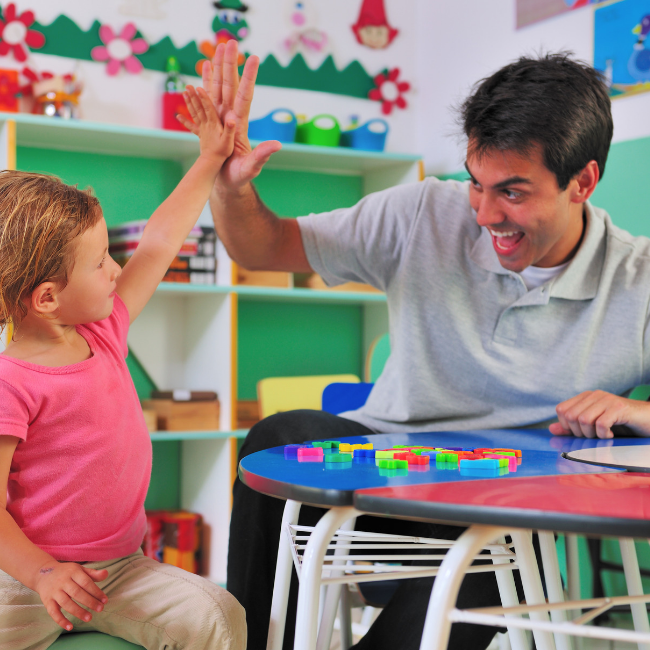
I still remember my 1st-grade teacher Madame Obadia pulling me aside and telling me I was a good friend to Miles, a boy who needed friends. It was profound, from then on, I believed it was part of who I was to be kind to the kids no one else was. I may have lost my way a little in middle school, but only for a year or so. My point is that I would not have ever been that affected by a sticker chart. Madame Obadia took the time to build a relationship, and her praise meant the world to me. That’s the power of building relationships with students.
Are All Sticker Charts Bad?
No.
I do not think all sticker charts are carte blanche evil, but it takes real intention to use them effectively.
My own daughter who has ADHD used one successfully as a private record of doing her best work with her teacher in 1st and 2nd grade. This was a strategy she liked, that was not on public display and was only ever used for positive reinforcement. She wasn’t expected to fill a square each day nor was she shamed or disciplined for not. It was a way to record her success, and lead to a larger prize – lunch with her teacher!
It should be noted also that she was never being compared to other students, this was a tool for her and her teacher only, I wasn’t even a part of it. This was a tool in creating and maintaining a relationship which is the right way to use sticker charts if there is a need. The chart and the prize of lunch with her teacher worked beautifully because it fits her temperament and personality. That is the key, and all behavior management should be with the individual child in mind. This teacher, who is a masterful teacher, much like my own 1st-grade teacher was, knew that my daughter would respond to this and used this tool as a way to build a stronger relationship.
How are you going to use stickers in your classroom this year? Me? I’ll use them to develop fine motor skills, for free choice art, maybe a mural or two but not for behavior management.
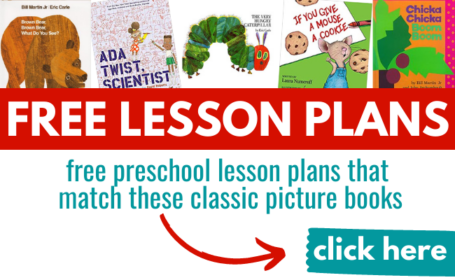
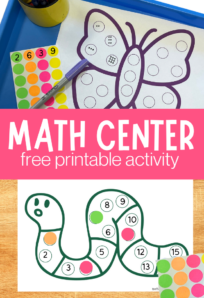
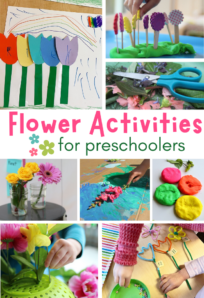
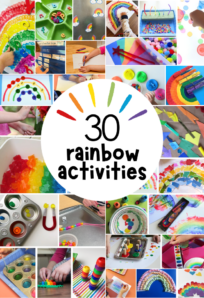
Cindy says
I use a sticker chart for clean up time. When the clean up song comes on they know it’s the cue to clean up. After the room is clean each child who cleaned up (which is everyone) gets a sticker. When the chart is full they get to go to the treasure box.
Cleaning up also comes with praise for helping to keep their classroom clean and neat as well as a big thanks for hard work and getting it done! When we play we really play!!
The thing I love the most about my sticker chart is how it is a passive math activity. The kids count how many they have earned, they count how many spaces are left to fill, they count how many red stickers they have. Everyone cheers when a child has earned their treasure box prize! It’s magical!
Brandi Zapata says
I have a classroom sticker chart. When the whole class does well together, I put a sticker on the chart. When the chart is full, there are ten spots, everyone gets to go to the treasure box.
Chimwemwe Muheya says
I am a resource teacher in Malawi, i was going to use the Stickers for several students with ADHD in there classroom. But after reading this, i think will talk it over with the class teachers for a better way for positive reinforcement. Thank you very much.
Allison McDonald says
I think the trick is to look at each child, for some the reinforcement is positive and works, but as a general rule I skip them.
Liz Govender says
Great choice for elliminating the behavior charts.
Was never one who encouraged a behavior chart.
Respect your reasoning
Nurul Nabilah says
Im a new teacher in this school, and im teaching a new age group. Somehow kids just dont listen to me when i call them to sit down for a lesson. i thought of using this “behaviour method” but after i’ve read your content im torn. Hahahaah is there any other way to do?